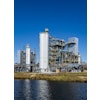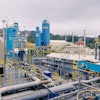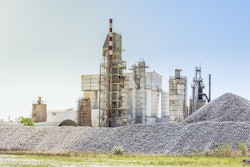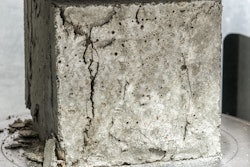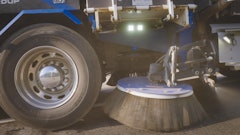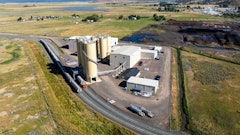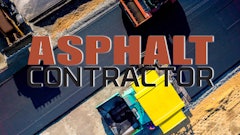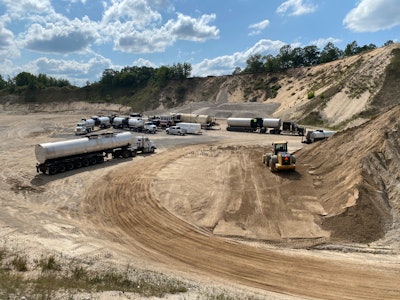
With America's infrastructure earning a "C-" on the American Society of Civil Engineers' 2021 Infrastructure Report Card, it is clear that a major revamp is in order for America's roads and bridges.
Thankfully, the Bipartisan Infrastructure Law (BIL) has invested $110 billion in surface transportation infrastructure, providing the opportunity to create long-lasting, sustainable projects. However, that infrastructure windfall doesn't look as big as it once did as inflation has steadily risen, leaving many states and contractors trying to figure out how they can make a shrinking pool of money cover their infrastructure needs.
One of the most impactful and proven options where some of the much-needed infrastructure dollars can be spent is to use rubber-modified binder for chip seal and other pavement preservation applications or rubber-modified asphalt (RMA) in upcoming projects. Rubber-modified pavement preservation systems and RMA are types of resurfacing and paving materials that use ground rubber from end-of-life tires to make safer, less expensive, and more environmentally friendly roads.
Over the past 40 years, these technologies have shown that improvements in overall pavement quality, resistance to aging, and life cycle cost benefit are achievable, while also getting a significant amount of scrap tires recycled into secondary use—a critical step toward a circular economy for tires.
Unfortunately, despite these benefits and the recycling potential of proven technologies, many decision-makers either don't know about or have outdated policies in place that prevent use. However, we at Entech believe that the use of tire rubber as a modifier in all types of pavement preservation and hot mix RMA applications is the future of asphalt, with a critical role to play in the ongoing infrastructure investment.
RMA's Proven Performance
Evidence shows that RMA is both more affordable and higher performing than traditional asphalt. Research from the University of Missouri, in conjunction with the U.S. Tire Manufacturers Association (USTMA) and Georgia-based non-profit The Ray, found that compared to regular asphalt, RMA can double the lifespan and reduce the cost of roads by 43%.
Commonly, RMA is used in traditional hot-mix and warm-mix asphalt paving layers, including in traditional flexible pavement systems. Research shows that base asphalt courses can benefit from the fatigue resistance of RMA, while the surface course can benefit from the rutting, aging and cracking resistance provided by RMA. We see the exact same benefit with the pavement preservation systems that have a very long history of performance.
What’s more, practical applications have shown that the use of tire rubber in all aspects of construction is beneficial and can be designed to perform in all climates. Research conducted in the state of Michigan, which has over 100 roads paved with RMA, found that RMA improved roads by generating more resistance to rutting and cracking in extreme weather conditions. Another study from Australia's RMIT University found that adding crumb rubber to the top layer of asphalt could reduce UV damage by half when compared to regular, unmodified asphalt. Long-term use shows that RMA holds up in both severe cold and extreme heat, demonstrating it could be an environmentally friendly, high-performance option for infrastructure projects across America if properly designed and constructed.
While research has long supported the benefits of RMA, recently policymakers and industry stakeholders have begun to push for more widespread adoption of these innovative technologies. For example, in 2020 the National Lieutenant Governors Association (NLGA) passed a resolution that advocates for the expanded use of RMA as "a sustainable, innovative pavement material which serves motorists, neighborhoods, state departments of transportation and the environment."
Further, in May a coalition of 16 stakeholder organizations sent a joint letter highlighting RMA as a material investment "ideally suited to meeting the goals of the Bipartisan Infrastructure Law and to fulfilling the Biden Administration’s mission to minimize waste, advance pollution prevention, support markets for recycled products, and promote a transition to a circular economy." The letter illustrates how the specific benefits of pavement preservation applications and RMA can help achieve the program goals of BIL.
With states poised to begin implementing funds from this unprecedented infrastructure investment, we need to put our dollars toward long-term sustainable solutions instead of defaulting to familiar materials like traditional asphalt. To do this, we must advocate for RMA as the standard paving choice in America, support the use of tire rubber-modified asphalt in pavement preservation applications, and promote this easy win for the environment. The time has come to embrace these technologies as the future of asphalt and make pavement preservation and RMA solutions the primary materials for paving and rehabilitating America's roads.


